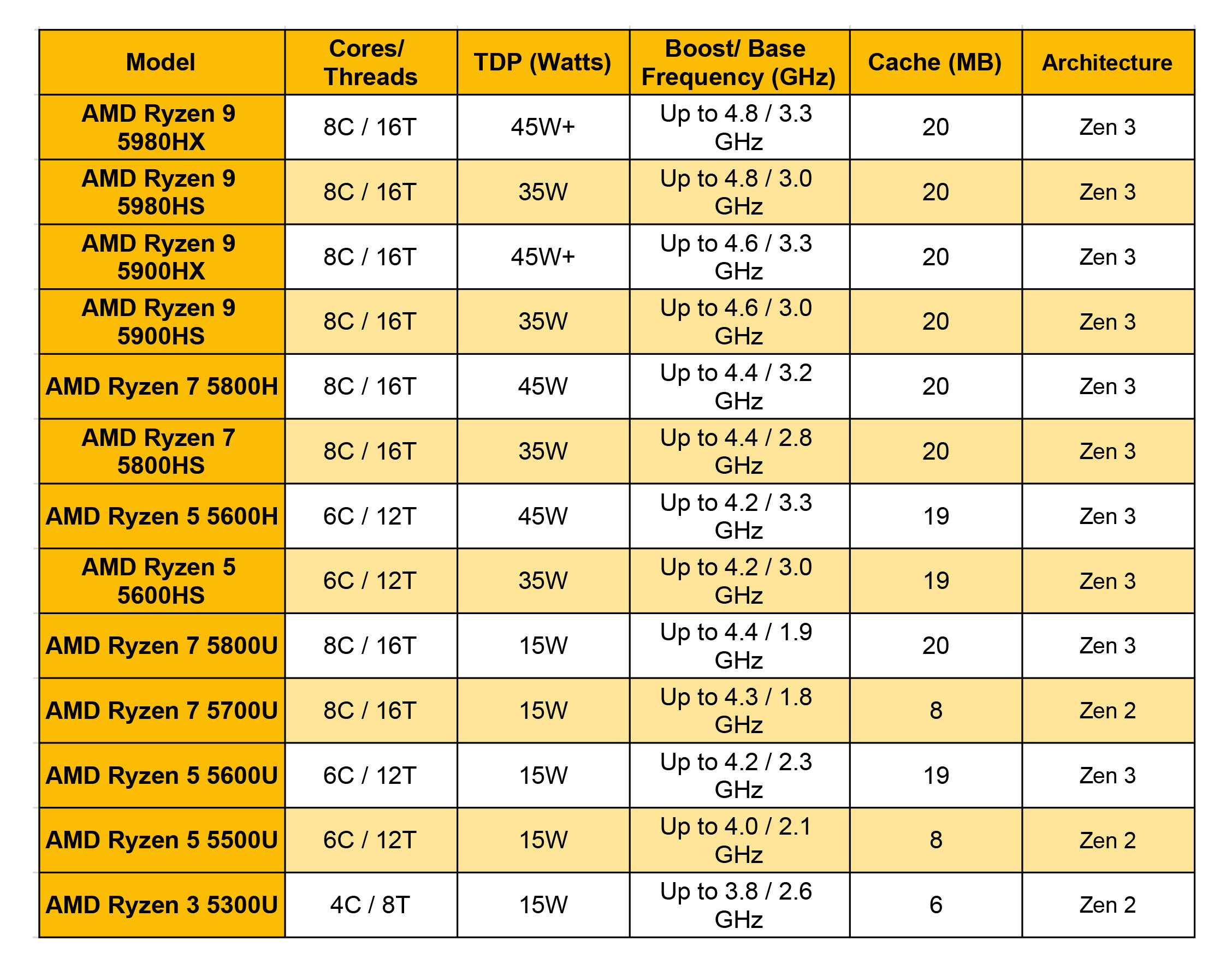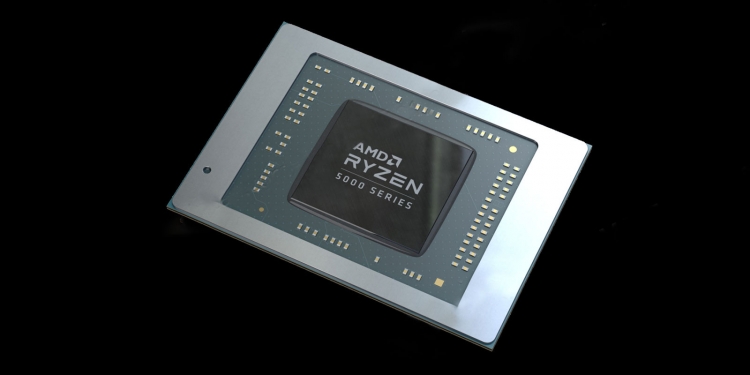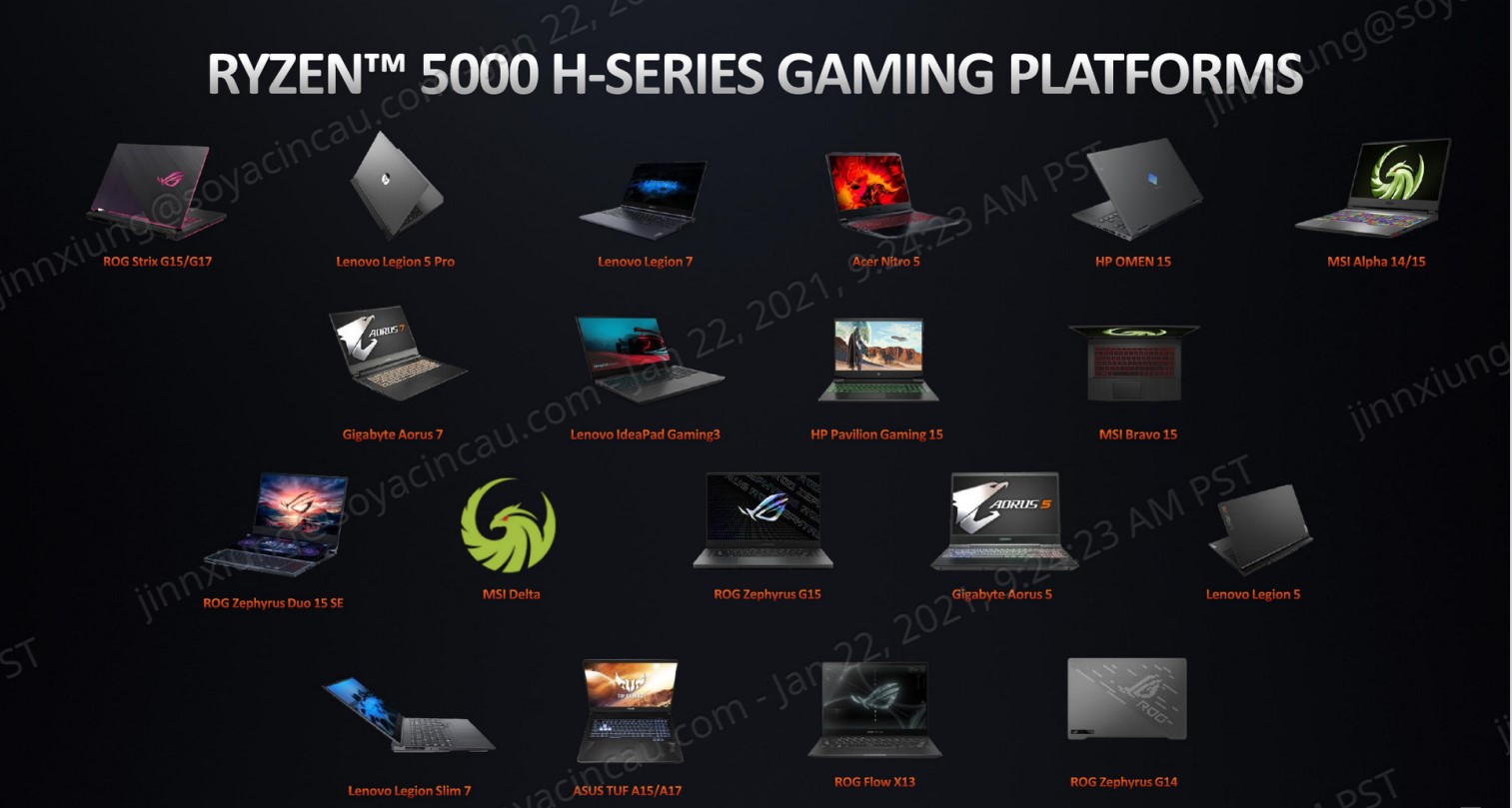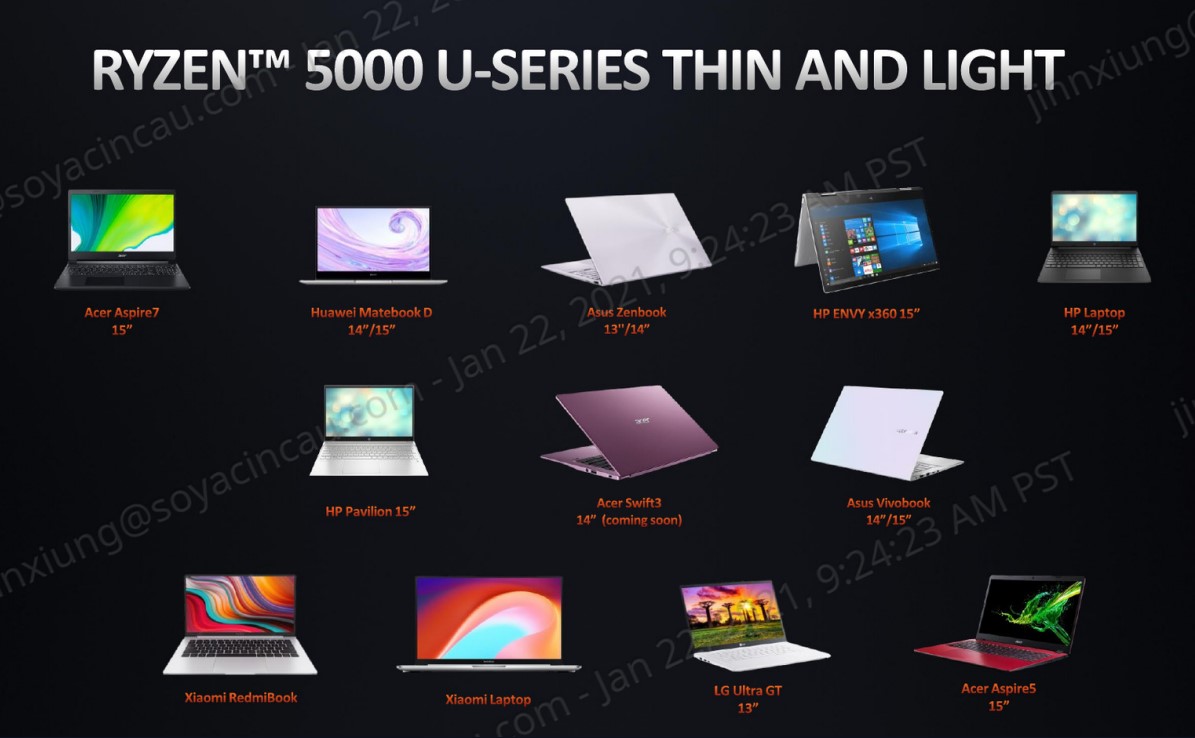Chipmaker AMD announced its fifth-generation Ryzen 5000 mobile CPUs during CES 2021 earlier this month. The new series of processors are built on the success of last year’s Ryzen 4000 series and will use AMD’s latest “Zen 3” processor architecture.
AMD chief executive officer Lisa Su claimed the series was “the company’s most powerful PC processors it has ever built”. Just like the previous generation, the Ryzen 5000 line is split into two categories for two different audiences.
There’s the H-series which is designed for laptops that will use discrete graphics, typically those that specialise in gaming and content creation. Of course, these notebooks will require more robust cooling and power delivery to unlock better overclockabiltiy.
This is followed by the U-series which is aimed at mainstream users looking for an ultraportable notebook. It should be noted that three of the U-series chips are based on the older Zen 2 architecture instead of Zen 3.
Just to recap, the Zen 3 architecture uses a 7-nanometer (7nm) production process which AMD calls “Cezanne”. For reference, Intel’s 11th gen chips continued to use a 10nm “Tiger Lake” process.
The smaller chip-fabrication process is said to offer greater performance and operating efficiency. AMD claims the Zen 3 cores’ single-core performance is up to 23% better than the previous generation Zen 2 cores.
With that said, here’s a chart that shows the entire line up of AMD’s Ryzen 5000 chips:

These 13 new processors span from low power 15W chips all the way up to two new overclockable 45W+ HX series models that are supposed to offer desktop performance on a notebook.
Altogether there are eight different Ryzen 5000 H-Series processors. The range runs from the Ryzen 5 5600HS with six cores, 12 threads, and a 35W TDP, up to the range-topping Ryzen 9 5980HX with eight cores, 16 threads, and a 45W+ TDP.
Topping out AMD’s mobile processor offering is the HX series processors that the chipmaker claims to provide gamers and creators top-level performance. This is followed by the HS processors which are slated to bring the power of the H-series to thinner and lighter form factors
One notable model, is the new AMD Ryzen 9 5980HX processor that is claimed to offer of up to 23% increased single-threaded performance and up to 17% faster multi-threaded performance over the previous generation.
Meanwhile, the headline U series processor is the 16-thread Ryzen 7 5800U, boasting 1.9GHz clock speeds and can be boosted up to 4.4GHz. It is said to offer up to 16% more single-threaded performance and up to 14% faster multithreaded performance. It is also stated to offer up to 17.5 hours of general usage and up to 21 hours of movie playback on a single charge.
It should be noted the chips with AMD has three Zen 2 core chips in the Ryzen 5000 line up. Tom’s Hardware reported that this approach was done to meet specific pricing criteria and customer demand on the lower end of its product stack. The Zen 2-powered Ryzen 3, 5 and 7 models all come under the lowest-end 15W U-series category. Though these chips share the same design as last year’s chips, they have some improvements that increase their clock rates, resulting in higher performance.
AMD boasted it has collaborated with many laptop makers and there are over 150 notebook models will use its chips. According to the company, compared to last year it increased the number of notebooks using its new Ryzen 5000 series by 50%.
According to the company, a number of OEMs will feature the new Ryzen chips in their premium models. Expect to see the Ryzen 5000 H-series featured in some of 2021’s best premium gaming laptops. This includes the new Asus ROG Zephyrus G15, Lenovo Legion 7, Asus ROG Zephrys Duo 15SE, MSI Bravo 15 and the HP Omen 15.
Meanwhile, the Ryzen 5000 U-series is set to be featured in upcoming thin and light laptops from various Original Equipment Manufacturer (OEM) like the Acer Aspire 7 15”, HP Pavilion 15”, HP Envy x360 15” and the Asus Vivobook 14”/15”.
If all this sounds exciting, you won’t have to wait long as AMD expects the Ryzen 5000 mobile processors to arrive in laptops form February 2021 onwards.










